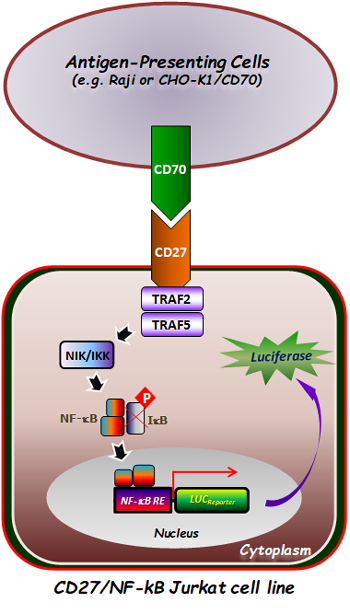Recombinant Mouse Ephrin-B2/EFNB2 (C-Fc-6His)(Discontinued)
Shipping Info:
For estimated delivery dates, please contact us at [email protected]
| Amount : | 50 µg |
| Content : | Lyophilized from a 0.2 µm filtered solution of PBS,pH7.4. |
| Storage condition : | Lyophilized protein should be stored at -20°C, though stable at room temperature for 3 weeks. Reconstituted protein solution can be stored at 4-7°C for 2-7 days. Aliquots of reconstituted samples are stable at -20°C for 3 months. |
| AA sequence : | RSIVLEPIYWNSSNSKFLPGQGLVLYPQIGDKLDIICPKVDSKTVGQYEYYKVYMVDKDQADRCTIKKENTPLLNCARPDQDVKFTIKFQEFSPNLWGLEFQKNKDYYIISTSNGSLEGLDNQEGGVCQTRAMKILMKVGQDASSAGSARNHGPTRRPELEAGTNGRSSTTSPFVKPNPGSSTDGNSAGHSGNNLLGSEVDDIEGRMDEPKSCDKTHTCPPCPAPELLGGPSVFLFPPKPKDTLMISRTPEVTCVVVDVSHEDPEVKFNWYVDGVEVHNAKTKPREEQYNSTYRVVSVLTVLHQDWLNGKEYKCKVSNKALPAPIEKTISKAKGQPREPQVYTLPPSREEMTKNQVSLTCLVKGFYPSDIAVEWESNGQPENNYKTTPPVLDSDGSFFLYSKLTVDKSRWQQGNVFSCSVMHEALHNHYTQKSLSLSPGKHHHHHH |
Source: Human Cells.
MW :49.6kD.
Recombinant Mouse Ephrin-B2 is produced by our Mammalian expression system and the target gene encoding Arg29-Glu227 is expressed with a Fc, 6His tag at the C-terminus. Ephrin-B2 is a single-pass type I membrane protein and it contains 1 ephrin RBD (ephrin receptor-binding) domain. Ephrin-B2 belongs to the ephrin (EPH) family and it is cell surface transmembrane ligand for Eph receptors, a family of receptor tyrosine kinases which are crucial for migration, repulsion and adhesion during neuronal, vascular and epithelial development. The ephrins and EPH-related receptors contain the largest subfamily of receptor protein-tyrosine kinases and have been associated with mediating developmental events, particularly in the nervous system and in erythropoiesis. Based upon their structures and sequence relationships, ephrins are allocated into the ephrin-A (EFNA) class, which are anchored to the membrane by a glycosylphosphatidylinositol linkage, and the ephrin-B (EFNB) class, which are transmembrane proteins. It also binds to receptor tyrosine kinase including EPHA4, EPHA3 and EPHB4 and together with EPHB4 plays a central role in heart morphogenesis and angiogenesis through regulation of cell adhesion and cell migration.
MW :49.6kD.
Recombinant Mouse Ephrin-B2 is produced by our Mammalian expression system and the target gene encoding Arg29-Glu227 is expressed with a Fc, 6His tag at the C-terminus. Ephrin-B2 is a single-pass type I membrane protein and it contains 1 ephrin RBD (ephrin receptor-binding) domain. Ephrin-B2 belongs to the ephrin (EPH) family and it is cell surface transmembrane ligand for Eph receptors, a family of receptor tyrosine kinases which are crucial for migration, repulsion and adhesion during neuronal, vascular and epithelial development. The ephrins and EPH-related receptors contain the largest subfamily of receptor protein-tyrosine kinases and have been associated with mediating developmental events, particularly in the nervous system and in erythropoiesis. Based upon their structures and sequence relationships, ephrins are allocated into the ephrin-A (EFNA) class, which are anchored to the membrane by a glycosylphosphatidylinositol linkage, and the ephrin-B (EFNB) class, which are transmembrane proteins. It also binds to receptor tyrosine kinase including EPHA4, EPHA3 and EPHB4 and together with EPHB4 plays a central role in heart morphogenesis and angiogenesis through regulation of cell adhesion and cell migration.
Always centrifuge tubes before opening. Do not mix by vortex or pipetting. It is not recommended to reconstitute to a concentration less than 100 µg/ml. Dissolve the lyophilized protein in ddH2O. Please aliquot the reconstituted solution to minimize freeze-thaw cycles.
Endotoxin : Less than 0.1 ng/µg (1 IEU/µg) as determined by LAL test.
For Research Use Only. Not for use in diagnostic/therapeutics procedures.
| Subcellular location: | Membrane |
| Post transnational modification: | Inducible phosphorylation of tyrosine residues in the cytoplasmic domain. |
| Tissue Specificity: | Expressed on lateral floor plate cells, specifically on commissural axon segments that have passed through the floor plate. Expressed in cells of the retinal ganglion cell layer during retinal axon guidance to the optic disk (PubMed:7651410, PubMed:10704386). Expressed in myogenic progenitor cells (PubMed:27446912). |
| BioGrid: | 199395. 1 interactions. |
|
There are currently no product reviews
|













.png)










